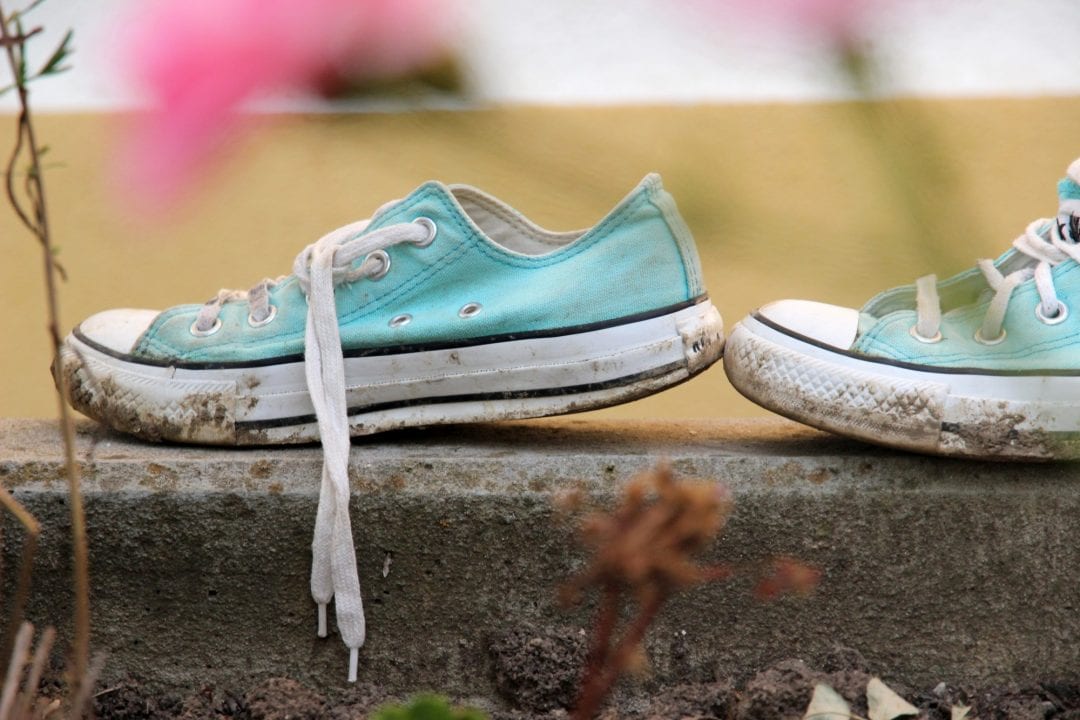What Bacteria are Commonly Found on Shoes?

Since March, many of us have become much more aware of the germs we carry with us every day. We’re washing and sanitizing our hands more, making more efforts to clean the surfaces around us, and wearing masks. But there’s one important area you may be neglecting to clean: your shoes.
Shoes can carry thousands of bacteria on them, making them one of the most dangerous disease vectors on us. Read on to learn more about the bacteria on shoes and what risks it can pose.
E. Coli
Escherichia coli, better known as E. coli, is a bacteria that lives in the large intestines of most animals, including humans. Most of the time, these bacteria are completely harmless and can help with the digestion process. But some strains of E. coli can damage the lining of your small intestine and cause problems.
One of the main symptoms of an E. coli infection is diarrhea, as well as stomach cramps and a low-grade fever. When someone with an E. coli infection goes to the bathroom and flushes the toilet, bacterial particles get flung into the air around them and settle on the floor. That person then picks up those bacteria on their shoes and tracks them along wherever they go.
Klebsiella Pneumonia
Another common shoe hitchhiker is klebsiella pneumonia, a gram-negative bacteria that can cause a variety of infections. This bacteria usually lives in our digestive tract and can be found in fecal matter. Outside of the hospital, the most common result of a Klebsiella pneumonia bacteria is what we know as walking pneumonia, an unpleasant respiratory infection.
But in the hospital, Klebsiella pneumonia can cause much more serious problems, beginning with dangerous blood infections. They can also infect wounds or surgical sites and may even cause meningitis. Because the bacteria are present in fecal matter, it’s easy to track in on your shoes, placing hospital patients at risk.
Serratia Ficaria
Serratia ficaria is a name we don’t run across very often, but it can be very dangerous, especially to immunocompromised patients. In nature, it lives in figs, though eating figs does not necessarily put you at risk of contracting any sort of infection. And this bacteria can also commonly be found hitching a ride on the soles of your shoes.
In an immunocompromised patient, Serratia ficaria can cause serious respiratory infections. It can also cause painful and dangerous abscesses under the skin that can be very difficult to treat. If you work around anyone immunocompromised, tracking this bacteria on your shoes could put them at enormous risk.
MRSA
If you work anywhere around a healthcare setting, you’ve probably heard of MRSA. Methicillin-resistant Staphylococcus aureus is a group of gram-negative bacteria that are a mutation of normal Staph bacteria. Staph infections on their own are dangerous enough, but MRSA has become resistant to the antibiotics we use to kill it.
If MRSA gets a foothold in hospital intensive care units or surgical centers, it can wreak havoc. Because it’s resistant to antibiotics, we have very few reliable ways to kill it or manage infections. And it can pass from person to person on the soles of our shoes, devastating entire hospital wings.
C. Diff
C. diff is another one of those bacteria that hospital workers refer to in fearful tones. Clostridium difficile is a bacteria that causes severe diarrhea and inflammation of the colon. It can cause such severe diarrhea that it wipes out your normal gut flora, creating a vicious cycle that’s difficult to break.
One of the things that make C. diff so dangerous is its rate of recurrence. About one in six people who get this infection will get it again within two months, so even if you survive the first infection, you may not survive the second. It’s extremely deadly, killing one in eleven patients over the age of 65 who get it.
MDR Gram-Negative Bacteria
Multi-drug resistant gram-negative bacteria are another dangerous pathogen you may find on your shoes. Some of the bacteria we’ve discussed here can have mutations that fall under this category. Outbreaks of this disease are common – and extremely dangerous – among intensive care unit patients.
The trouble with MDR gram-negative bacteria is that they’re resistant to a variety of different antibiotics. This means that the usual tools we have to control and kill them don’t work, and it becomes very hard to control infections. They can even pass on genetic material to other bacteria that allows them to become drug-resistant, too.
Coronavirus
And, of course, one of the most dangerous germs you may find on your shoes right now is the coronavirus. This deadly disease has killed more than 250,000 people in the United States and more than one million people worldwide. And with severe spikes happening right now, it’s more dangerous than it ever has been.
Many of us wear masks and gloves and wash our hands often to try to combat the spread of COVID-19. But even with all these precautions, we can track the virus in our shoes. Anywhere an unmasked person has been, there will be germs, and you could wind up carrying those germs to your workplace or home.
Eliminate Bacteria on Shoes
Our shoes are one of the biggest sources of infection we carry with us on a day-to-day basis. We can track in fecal matter, carry dangerous diseases from room to room in a hospital, and bring in the deadly coronavirus from the street. Dealing with the bacteria on shoes is one of the most important steps to keeping an environment clean and hygienic.
If you’d like to discover the best system for disinfecting shoes, check out the rest of our site at PathO3Gen Solutions. We have a unique shoe sanitizing system that uses both UVC light and ozone that’s on average more than 110 times as effective as normal UVC disinfectors. Get a quote today and start keeping your workplace cleaner the reliable way.

